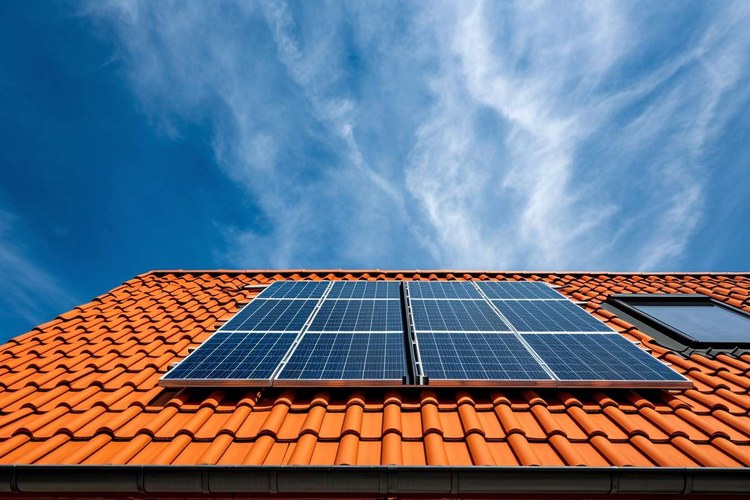Solar Tiles: Affordable Future & Revolutionary Aesthetics
Solar tiles merge energy efficiency with architectural elegance, redefining how renewable energy integrates into homes. Apart from enhancing aesthetic appeal, these innovative tiles efficiently generate electricity, offering a valuable return on investment. Careful selection, proper maintenance, and awareness of market trends provide homeowners with opportunities to align with a sustainable future.

What are solar roof tiles and how do they work?
Solar roof tiles, also known as solar shingles, are photovoltaic cells designed to look like and function as conventional roofing materials while also producing electricity. Unlike traditional solar panels, these tiles are seamlessly integrated into the roof structure, creating a sleek and uniform appearance. Each tile contains solar cells that convert sunlight into electrical energy, which can then be used to power homes or fed back into the grid.
The technology behind solar tiles is similar to that of standard solar panels, utilizing silicon-based photovoltaic cells. However, the innovative design allows for a more aesthetically pleasing installation that maintains the architectural integrity of a building. This integration addresses one of the main objections to traditional solar panels – their visual impact on a home’s appearance.
How do solar tiles compare to traditional solar panel mounting systems?
When comparing solar tiles to traditional solar panel mounting systems, several factors come into play. Traditional solar panels are typically mounted on aluminium solar panel mounting rails, which are affixed to the existing roof structure. While effective, this method can be visually obtrusive and may not align with the aesthetic preferences of some homeowners.
Solar tiles, on the other hand, replace conventional roofing materials entirely, offering a seamless look that many find more appealing. They eliminate the need for separate mounting systems, as the tiles themselves serve as both the roofing material and the solar energy generator. This integration can lead to a more streamlined installation process and potentially lower labour costs.
However, it’s important to note that traditional solar panels often have higher energy conversion efficiency rates compared to solar tiles due to their larger surface area and optimized angle positioning. The choice between the two systems often comes down to a balance of aesthetics, efficiency, and cost considerations.
What are the benefits of choosing solar roof tiles for your home?
Opting for solar roof tiles offers several advantages for homeowners:
-
Aesthetic Appeal: Solar tiles provide a sleek, integrated look that enhances the visual appeal of a property, potentially increasing its value.
-
Durability: High-quality solar tiles are designed to be as durable as traditional roofing materials, offering protection against the elements while generating electricity.
-
Energy Independence: By generating their own electricity, homeowners can reduce reliance on the grid and potentially lower energy bills.
-
Increased Property Value: Homes equipped with solar technology often command higher resale values in the real estate market.
-
Environmental Impact: Solar tiles contribute to reducing carbon footprints by harnessing clean, renewable energy.
-
Versatility: Solar tiles can be installed on new constructions or as part of roof replacements, offering flexibility for various project types.
Are solar roof tiles a cost-effective solution for homeowners?
The cost-effectiveness of solar roof tiles is a crucial consideration for many homeowners. While the initial investment for solar tiles is typically higher than that of traditional solar panels, several factors contribute to their long-term value:
-
Energy Savings: Over time, the electricity generated by solar tiles can significantly reduce or eliminate electricity bills.
-
Government Incentives: Many regions offer tax credits, rebates, or other financial incentives for solar installations, which can help offset initial costs.
-
Increased Home Value: The aesthetic appeal and energy-generating capabilities of solar tiles can increase a property’s market value.
-
Roof Replacement Integration: When installed as part of a necessary roof replacement, the cost difference between solar tiles and premium roofing materials becomes less significant.
-
Long-term Durability: High-quality solar tiles are designed to last as long as traditional roofing materials, potentially reducing the need for future replacements.
To provide a clearer picture of the costs involved, here’s a comparison of solar roof tile options currently available in the market:
| Product | Provider | Cost Estimation (per m²) |
|---|---|---|
| Solar Roof | Tesla | £220 - £260 |
| Solé Power Tile | SunTegra | £180 - £220 |
| Apollo II | CertainTeed | £200 - £240 |
| Slate 2 | GB Sol | £190 - £230 |
Prices, rates, or cost estimates mentioned in this article are based on the latest available information but may change over time. Independent research is advised before making financial decisions.
It’s important to note that while the upfront costs of solar tiles are higher than traditional solar panels, the long-term savings and aesthetic benefits can make them a worthwhile investment for many homeowners.
How do aluminium solar panel mounting rails compare to integrated solar tiles?
Aluminium solar panel mounting rails are a crucial component of traditional solar panel installations. They provide a secure and adjustable foundation for mounting solar panels on various roof types. While these mounting systems are cost-effective and widely used, they do not offer the same level of aesthetic integration as solar tiles.
The main advantages of aluminium mounting rails include:
-
Flexibility: They can be installed on most existing roof types without major modifications.
-
Cost-effectiveness: Generally less expensive than a full solar tile roof replacement.
-
Efficiency: Allow for optimal panel angle adjustment to maximize solar energy capture.
However, solar tiles eliminate the need for separate mounting systems altogether, offering a more streamlined appearance and potentially simpler installation process. The choice between the two often depends on factors such as budget, aesthetic preferences, and the structural condition of the existing roof.
What does the future hold for solar roof tile technology?
The future of solar roof tile technology looks promising, with ongoing research and development aimed at improving efficiency, durability, and affordability. As manufacturing processes become more refined and economies of scale come into play, we can expect to see a reduction in the cost of solar tiles, making them more accessible to a broader range of homeowners.
Advancements in photovoltaic technology are likely to increase the energy conversion efficiency of solar tiles, narrowing the performance gap with traditional solar panels. Additionally, innovations in energy storage solutions, such as integrated battery systems, could enhance the overall effectiveness of solar tile installations, allowing for better energy management and increased independence from the grid.
As climate change concerns drive more stringent building regulations and energy efficiency standards, solar tiles are poised to play an increasingly important role in the construction industry. Their ability to seamlessly integrate renewable energy generation into building design aligns well with the growing focus on sustainable architecture and net-zero energy buildings.
In conclusion, solar roof tiles represent a significant step forward in the integration of renewable energy technology with residential architecture. While challenges remain in terms of cost and efficiency compared to traditional solar panels, the aesthetic advantages and potential for future improvements make solar tiles an attractive option for homeowners looking to combine sustainability with style. As the technology continues to evolve and mature, solar tiles are set to become an increasingly common feature of the roofscapes of the future, offering an elegant solution to our growing energy needs.




